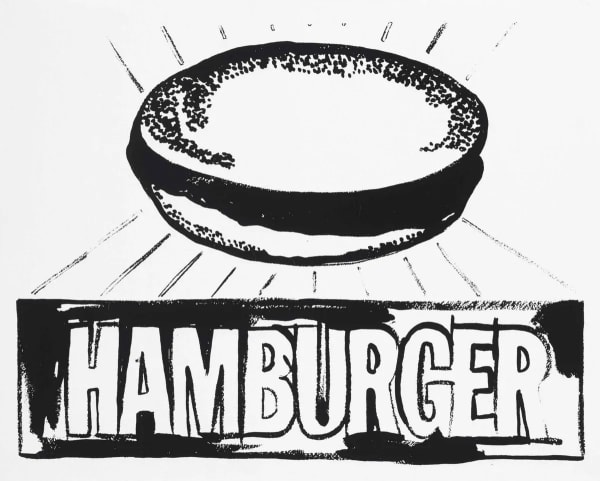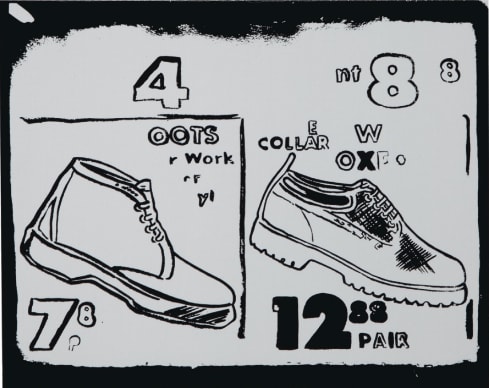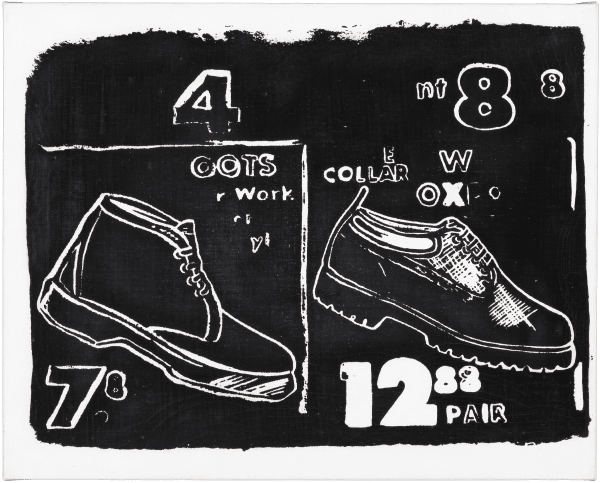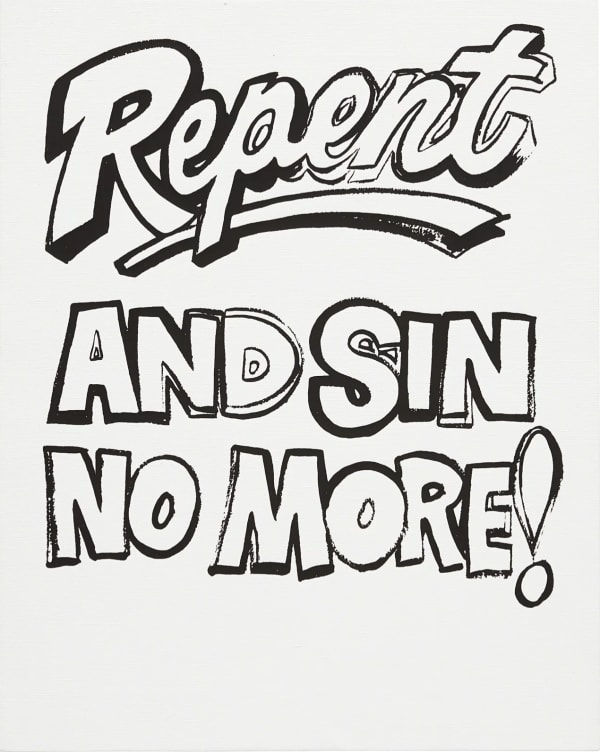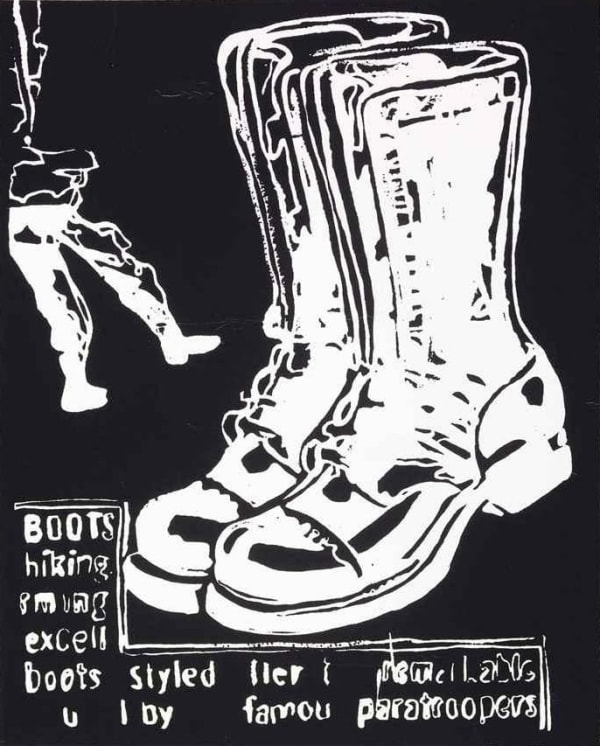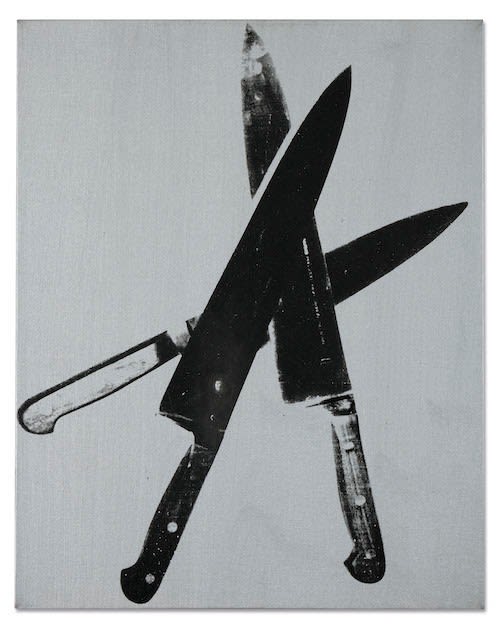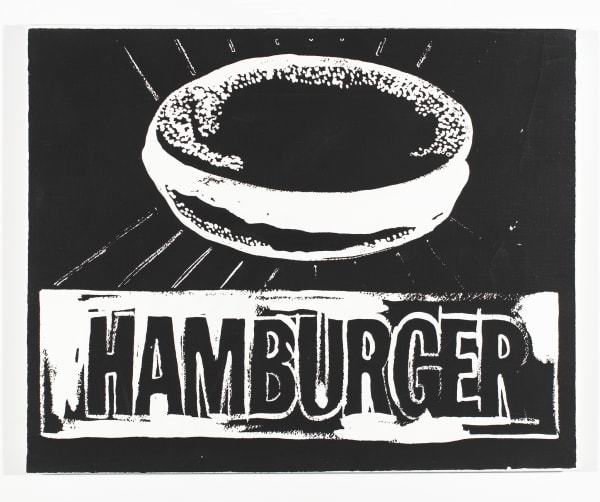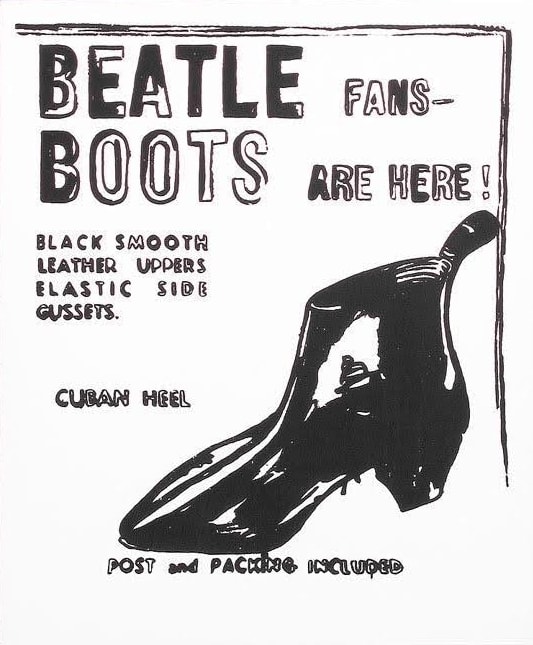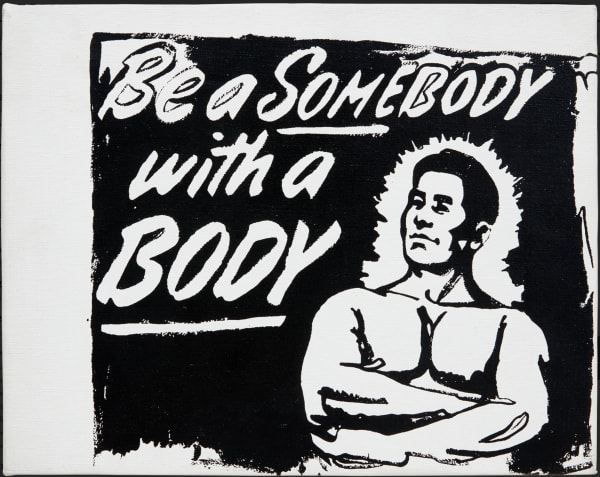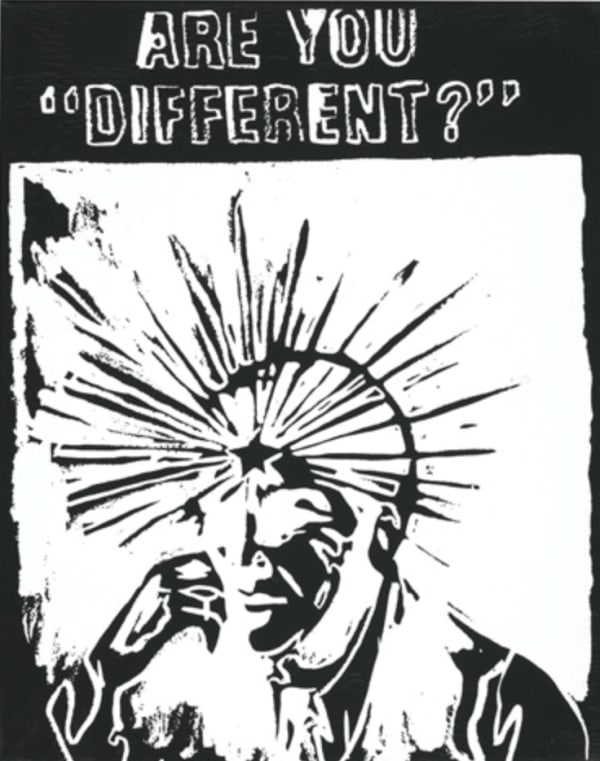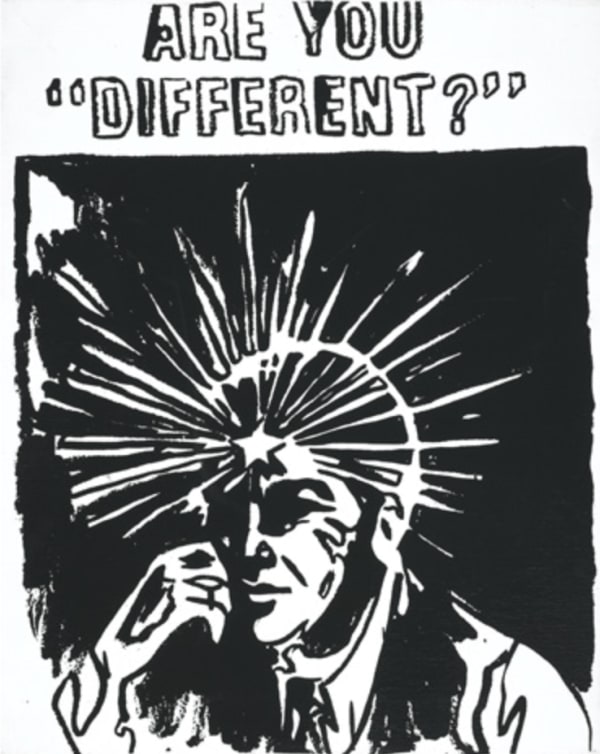
Andy Warhol
40.8 x 50.8 cm
Andy Warhol's Gun Painting from 1982 is a striking example of the artist's exploration of violence and its representation in popular culture. Created during a period when Warhol was increasingly interested in themes of death and mortality, this painting depicts a stylized image of a revolver against a vibrant, monochromatic background.
The Gun Painting series emerged in the early 1980s, a time when gun violence and its cultural impact were becoming increasingly prominent in American society. Warhol's decision to focus on the image of a gun reflects his fascination with the darker aspects of contemporary life and his willingness to confront taboo subjects through his art.
In Gun Painting, Warhol employs his trademark technique of repetition and seriality, presenting multiple iterations of the same image in a grid-like format. This repetition serves to underscore the ubiquity and normalization of violence in society, while also drawing attention to the visual impact of the revolver as an iconic symbol of power and danger.
Despite its seemingly straightforward subject matter, Gun Painting is imbued with layers of ambiguity and complexity. While the revolver is often associated with themes of violence and aggression, Warhol's treatment of the image blurs the line between fascination and critique. By isolating the image of the gun and presenting it as a standalone object of contemplation, Warhol prompts viewers to reconsider their perceptions of violence and its representation in art and culture.
Moreover, the vibrant colors and graphic simplicity of Gun Painting serve to heighten its impact and provoke an emotional response from the viewer. The bold contrast between the bright background and the stark image of the revolver creates a sense of tension and unease, inviting viewers to confront the uncomfortable realities of gun violence in society.
As with much of Warhol's work, Gun Painting raises important questions about the nature of art and its role in shaping public discourse. By presenting a familiar yet controversial image in a new context, Warhol challenges viewers to confront their own attitudes towards violence and to consider the broader social and political implications of gun culture.
Overall, Andy Warhol's Gun Painting from 1982 is a powerful and thought-provoking artwork that continues to resonate with audiences today. Through his bold imagery and provocative subject matter, Warhol invites viewers to engage with complex issues surrounding violence, power, and the human condition, prompting reflection and dialogue long after the paint has dried.
-
 Andy WarholHamburger Positive, 1986
Andy WarholHamburger Positive, 1986 -
 Andy WarholWorking Boots Positive, 1985-86
Andy WarholWorking Boots Positive, 1985-86 -
 Andy WarholWorking Boots Negative, 1985-86
Andy WarholWorking Boots Negative, 1985-86 -
 Andy WarholRepent and Sin No More Negative, 1986-6
Andy WarholRepent and Sin No More Negative, 1986-6 -
 Andy WarholRepent and Sin No More, 1986-6
Andy WarholRepent and Sin No More, 1986-6 -
 Andy WarholParatrooper Boots Positive , 1985-86
Andy WarholParatrooper Boots Positive , 1985-86 -
 Andy WarholParatrooper Boots Negative, 1985-86
Andy WarholParatrooper Boots Negative, 1985-86 -
 Andy WarholMap Of Eastern U.S.S.R. Missile Bases Positive, 1985-86
Andy WarholMap Of Eastern U.S.S.R. Missile Bases Positive, 1985-86 -
 Andy WarholMap Of Eastern U.S.S.R. Missile Bases Negative, 1985-86
Andy WarholMap Of Eastern U.S.S.R. Missile Bases Negative, 1985-86 -
 Andy WarholKnives, 1981-82
Andy WarholKnives, 1981-82 -
 Andy WarholHamburger Negative, 1986
Andy WarholHamburger Negative, 1986 -
 Andy WarholHamburger Green, 1986
Andy WarholHamburger Green, 1986 -
 Andy WarholHamburger, 1986
Andy WarholHamburger, 1986 -
 Andy WarholBe Somebody With A Body Negative, 1985 - 86
Andy WarholBe Somebody With A Body Negative, 1985 - 86 -
 Andy WarholBeatle Boots Positive, 1986
Andy WarholBeatle Boots Positive, 1986 -
 Andy WarholCampbell's Soup Can Tomato Soup, 1985
Andy WarholCampbell's Soup Can Tomato Soup, 1985 -
 Andy WarholBe A Somebody With A Body , 1985 - 86
Andy WarholBe A Somebody With A Body , 1985 - 86 -
 Andy WarholArt Positive, 1985-6
Andy WarholArt Positive, 1985-6 -
 Andy WarholAre You Different Negative, 1985-6
Andy WarholAre You Different Negative, 1985-6 -
 Andy WarholAre You Different, 1985-6
Andy WarholAre You Different, 1985-6 -
 Andy WarholArt Negative, 1985-6
Andy WarholArt Negative, 1985-6 -
 Andy WarholGimbels, 1983
Andy WarholGimbels, 1983
